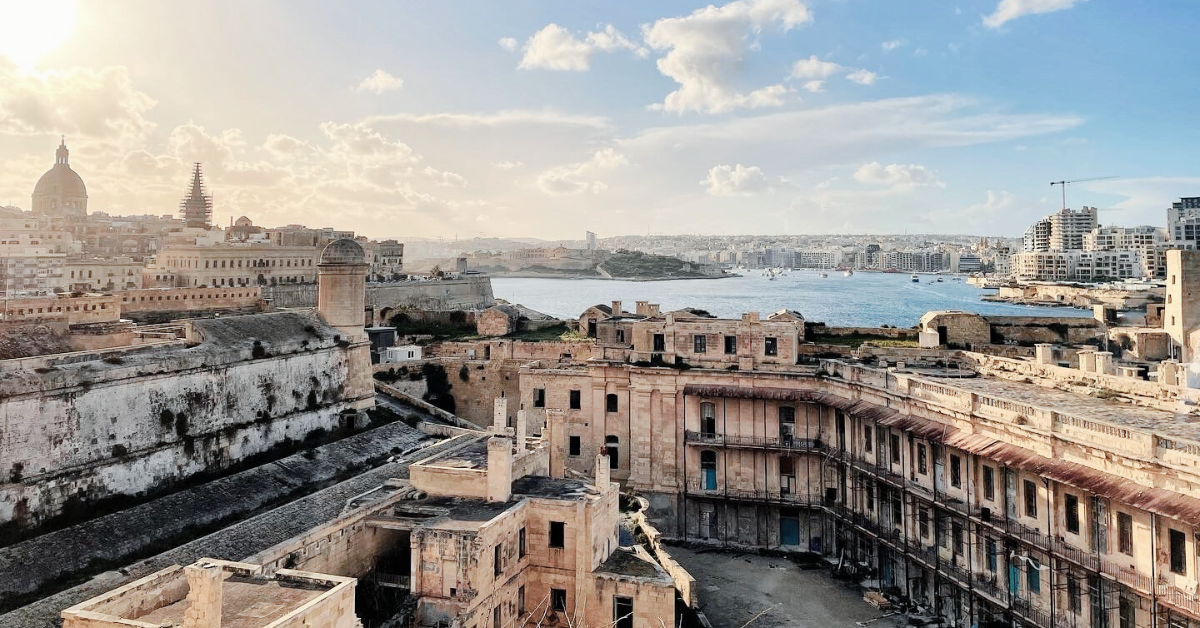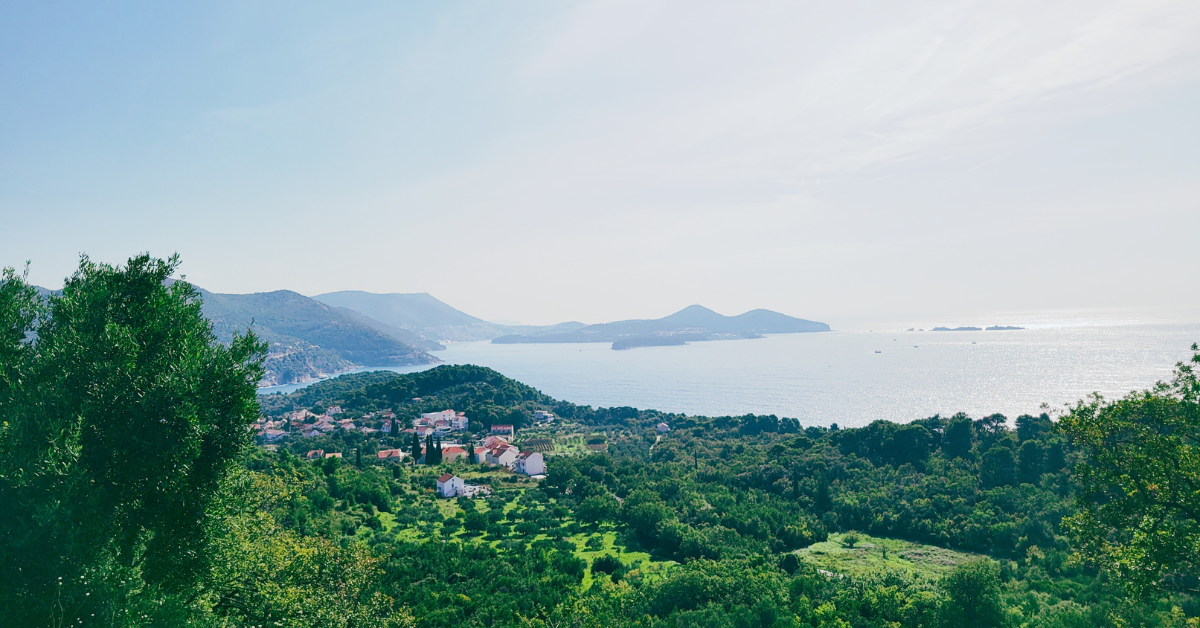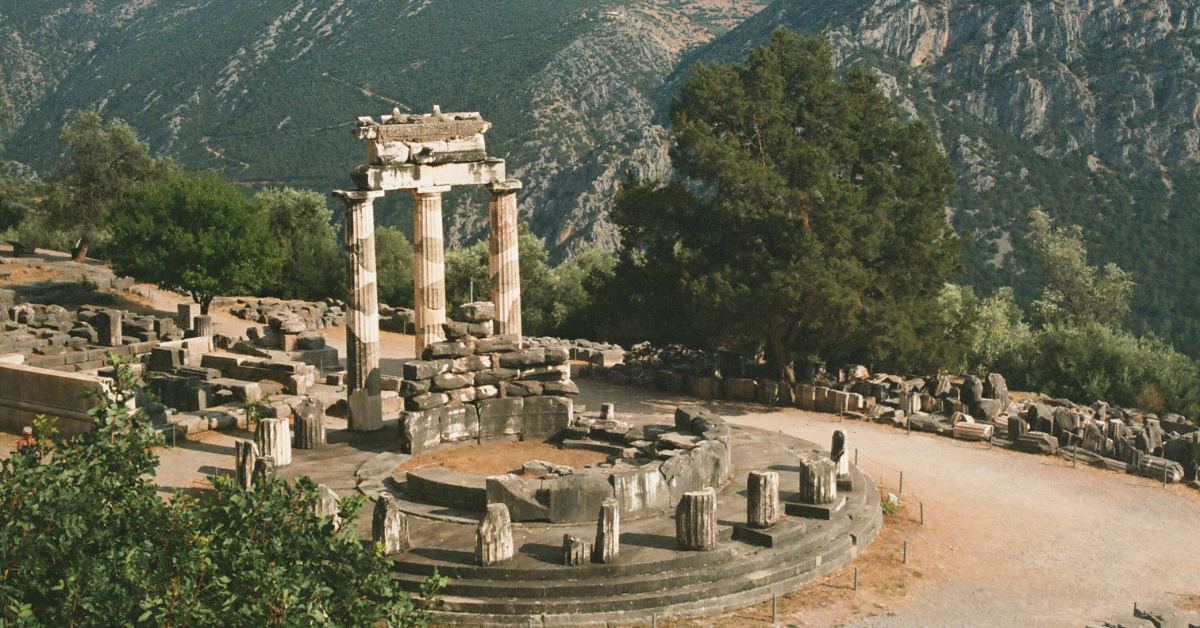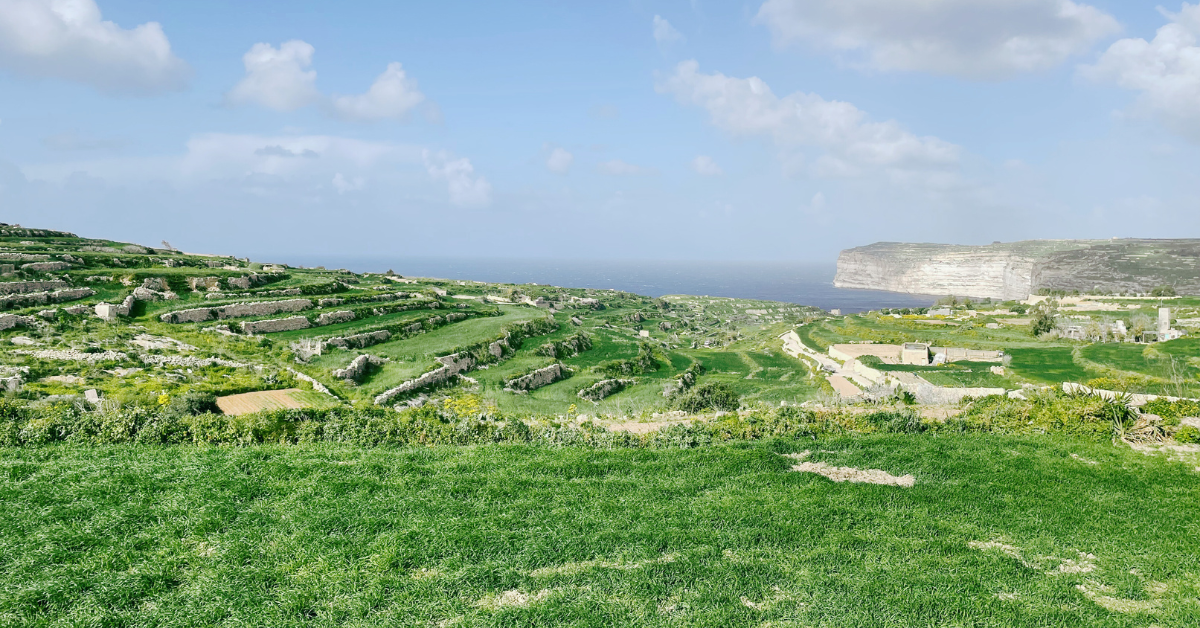Perched high on the rugged cliffs of Cornwall’s north coast, Tintagel is a place where myth and history blur in the sea mist. Best known as the legendary birthplace of King Arthur, this windswept village is steeped in folklore, ancient ruins, and dramatic natural beauty. Each of those aspects on their own is enough to tempt me, but together? Looking back, it’s no wonder I ended up in Tintagel.
Getting to Tintagel was a bit of an adventure in itself. I took the long route (though let’s be honest, on a rural bus in Cornwall, everything is the long route) from Okehampton in Devon, with a short stop in the seaside town of Bude. There, I had a perfect little tea break—scone, jam, clotted cream, the whole works. Now firmly in Cornwall territory, I was curious about the so-called cream tea rivalry between Devon and Cornwall. Verdict? I couldn’t care less—it’s all delicious.
The final stretch from Bude to Tintagel was its kind of thrill. Hats off to the bus drivers who somehow navigate those impossibly narrow country lanes. I was half convinced we’d scrape past hedges or collide around blind bends, but they are the pros. Obviously a Canadian here with our wide roads! Between anxious glances out the window, I caught glimpses of stunning coastal scenery—the kind that makes you forget the tension and just stare in awe.

Tintagel Town
Accommodation in Tintagel
There are a fair number of accommodation options along the high street. I stayed at King Arthur’s Arms Inn pub. It was nice enough and right across the street from the Old Post Office.
Eating in Tintagel
Being in England, there are several pubs, fish and chip and tea shops to satisfy all of your food needs. I spent most of my days out and about, so I ate in the pub in which I stayed, as they had a varied menu that was just what I needed. I recommend having a bite to eat at St. Nectan’s Glen cafe, before or after you see the waterfall. They had delicious scones with clotted cream, jam and a pot of tea.
Old Post Office
The Old Post Office was originally a 14th-century yeoman farmer’s house. During the Victorian era, the house was modified for use as the local post office. The property is now owned and maintained by the National Trust. You can take a tour with a guide, or venture through the house on your own. There is a great mock-up of how the house may have looked, along with some antique postal equipment. Out back is a lovely cottage garden.
Church of St Materiana’s
Up on the cliffs, a ways from the main part of town, is the ancient church of St Materiana’s. It is thought that the original church was built in the 6th century, and had been rebuilt/modified in the 12th century, with the addition of the tower in the 13th century. Saint Materiana is believed to have been a princess of the 5th century who ruled over the ancient Welsh kingdom of Gwent.
It is a lovely old church with a large and ancient cemetery. The views of the castle and coastline from the church are also amazing.

Tintagel Castle
The castle is set on a large outcrop of rock, connected to the mainland by a narrow neck of land. The castle was built by Richard, Earl of Cornwall, the brother of King Henry III. It is thought that he purchased the land and built the castle simply because of the Arthurian legends. The castle was not strategic in a military sense, nor was it extravagantly built. Historians wonder why he would spend the money and time building at Tintagel. The castle fell into ruin not long after being built, a process that was likely sped along by the brute force of the Atlantic Ocean. It was very windy and cold while exploring the castle, even though it was warm and sunny when I left my accommodation in town.
Tintagel Castle and the land it sits on have a lengthy history and are steeped in folklore. The first known occupants were the Romans, evidenced by artifacts found during excavations. The second inhabitants or land use was perhaps as a trade center. Pottery originating from the Mediterranean was also found during excavations.
The following two details are from long-standing legends that may or may not have any historical merit. The castle is said to be the place of King Arthur’s conception, between King Uther Pendragon and the Duchess of Cornwall. Merlin was thought to have played a magical role in the conception. His cave is visible from the castle, located on the west side of Haven Beach. The second story is the tragedy of Tristan and Isolde’s love (a similar story to Romeo and Juliet) which is also entwined with Arthurian and Tintagel legends. Details on their story can be found here.




Near Tintagel
Rocky Valley
Rocky Valley trail is a circular trail, starting in Boscastle Harbour, joining the SW Coastal Path and then looping back along the road. Since I was staying in Tintagel, with no vehicle, I modified the route a little. I started at Tintagel Castle, walked the SW Coastal Path toward Boscastle, thus joining up with the traditional Rocky Valley trail. The area is particularly beautiful due to the River Trevillet having eroded its way through the rock, creating deep jagged sections, on its way to the sea.
After Rocky Valley itself, the walking path continues along the Trevillet river and past the ruins of Trethevy Mill. Don’t forget to stop here, as there are ancient rock carvings, or petroglyphs, in the shale cliff faces. There are some very interesting theories about the petroglyphs, which can be read here. They are controversial, as there has been nothing like them found in this part of England before. I didn’t know about the rock carvings, and just happened to stumble upon them as I was exploring the mill ruins. It is such a beautiful and magical area.




St Nectan’s Glen
St Nectan’s Glen, tucked away in a lush, moss-covered valley, feels almost otherworldly. The highlight is St Nectan’s Kieve, a stunning 60-foot waterfall that plunges through a hole in the rock into a crystal-clear pool below. I saw a photo of the waterfall here, and I simply had to visit. It didn’t look real in photographs; I had to see it for myself. This was a stop on my Rocky Valley hike. Here is a link to the route.
Once you get there, after a little trek through the forest, there is a little café and shop to refresh before walking down to see the falls. The entry ticket price includes a pair of wellies (rainboots) to wear, as it is wet and soggy on the way down to the waterfall. Long associated with legends, saints, and spiritual seekers, the glen has a peaceful, almost magical atmosphere—the place is truly buzzing with magic. There is something in the air that you can just feel.
My two days in Tintagel still stand out in my mind as major travel highlights – specifically St Nectan’s Glen. It is one of my favourite film photos on my walls, and I get so many questions and comments about it.

Pin me for later























Leave a Reply